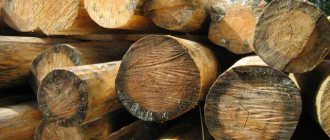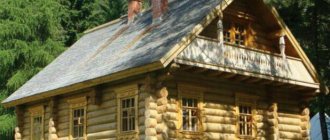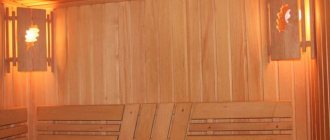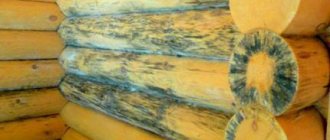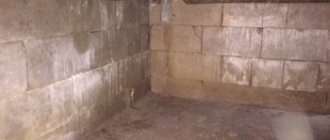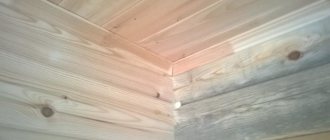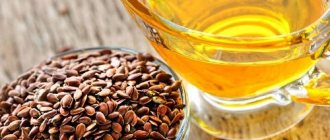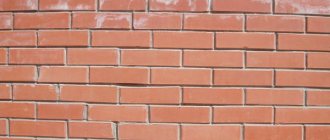- March 26, 2019
- Walls
- Marina Lobacheva
For various reasons, fungus may appear on the walls of an apartment. Its spores are dangerous to the health of every person. It is impossible to get rid of it with a standard wash, so you have to resort to some drastic and complex methods. Therefore, anyone who finds spores on the walls of their apartment should understand how to remove fungus from the walls so that such a problem does not arise again in the future. To do this, you can use different technologies and means.
Causes of fungus
Mold survives even in extreme conditions, so it can be difficult to completely get rid of. It most often forms in places with high levels of humidity, but it can appear even in a warm and well-ventilated apartment. In this case, the spores are in the air, settling on furniture, walls and other surfaces of the room. Then they multiply quickly, which is dangerous for people living in this room, so it is important to know how to remove fungus from the walls.
The main reasons for the appearance of fungus include:
- the room has a high level of humidity;
- During the construction of a residential building, cheap materials were used, which led to freezing of the walls in winter;
- the construction of the house was carried out by non-professionals, so they violated construction technology or some significant standards;
- Condensation occurs on plastic windows every day;
- the residents of the building insulated the windows in violation of certain rules;
- there is no ventilation system in the room;
- the presence of damp basements in an apartment building.
Initially, the property owner must determine the cause of the dispute, since if it is not eliminated, the fungus will still appear periodically on the walls of residential premises. The most common cause is excess moisture, which needs to be removed quickly. This often requires complex construction work. Only after this can you use various remedies against fungus on the walls.
Causes of fungus and harm to the body
Unlike fungi that are beneficial to humans, which are used to sour milk and create medicines, there are also harmful types. Mold can settle in industrial premises, in living rooms and bedrooms, in the kitchen, but most often it can be seen in the bathroom or other rooms with high humidity.
The immediate cause of the appearance of fungus lies in dampness. Risk factors:
- indoor humidity more than 60%,
- violation of the ventilation regime, rare ventilation of the room,
- the presence of walls with poor vapor permeability,
- errors during installation of the ventilation system,
- excessive coolness, lack of heating (for example, on the balcony),
- presence of leaking plumbing.
Often the fungus is found in end apartments, where it is colder than in housing with a different location. In some apartments, mold deposits are detected after the installation of plastic windows, since the microclimate in the room changes and air circulation is disrupted.
How to find fungus on walls or ceilings? You need to pay attention to black, green, yellow spots, less often they are gray-brown, pink. Some people think that such stains are just dirt, but you shouldn’t put up with it or remove it with regular water. Mold elements are responsible for the production of aflatoxins, which cause intoxication of the body and over time can provoke cancer.
Yellow mold is considered the most dangerous and poisonous, but other fungi also produce mycotoxins, which reduce immunity and performance and can cause the following diseases:
- rhinitis, otitis, sinusitis,
- allergies, urticaria, diathesis in children,
- bronchial asthma,
- headache,
- damage to the heart and internal organs,
- skin diseases,
- diarrhea, nausea,
- stomatitis,
- conjunctivitis.
The unpleasant sight that is a fungus can be seen almost everywhere where there is high humidity. Microorganisms can invade brick, concrete walls, ceilings or floors; they thrive on putty, plaster and especially wood.
It is the most difficult to remove mold from wood, since the growth rate of microorganisms is faster, and wooden surfaces retain moisture more strongly. Furniture and wooden wall coverings are the most “popular” substrates on which mold settles.
In second place at the risk of infection are loose gypsum walls and bases on which there is a thick layer of putty. Mold also appears on brick and concrete, but removal is easier.
Where does fungus usually appear?
You can identify several places in an apartment or house where mold occurs most often. These include the following areas:
- in wooden buildings it forms under the floor;
- in apartments, mold most often appears in corner rooms;
- in rooms with high levels of humidity, disputes arise very often, and such rooms include a bathroom or toilet;
- You can detect fungus in a room where the ventilation system is missing or not working properly.
Some people prefer to contact specialized companies to eliminate fungus because they are afraid that they themselves will not be able to cope with this problem. In fact, if you choose the right remedy for fungus on the walls, and also perform the procedure several times, you can easily eliminate all spores.
Before starting work, it is important to make sure that the room where mold was found will be constantly ventilated. Additionally, it is recommended to eliminate moisture and install a high-quality ventilation system.
Types and harm
Treatment for mold may vary depending on the type of mold. There are several types of mold that can often be found indoors. When choosing a remedy for mold and mildew on the walls, you need to take into account the characteristics of the formation, then you can effectively eliminate the problem.
When choosing a remedy for mold and mildew on the walls, you need to take into account the characteristics of the formation.
White
This type appears on the vegetation available in the house. Most often, flowers, shoots, root systems and plant soil are affected. At first it appears as a cobweb-like coating on pottery, a small coating quickly spreads and the cobweb becomes thicker.
It is not difficult to fight this species; if the plant cannot be cured, then it should be removed from the room and the fungus will not spread further. The presence of white mold near a person can cause an allergic reaction.
Most often, flowers, shoots, root systems and plant soil are affected.
Black
The black type of mold is the most harmful to humans. Usually its appearance occurs behind damp and warm objects; such an environment is well suited for formations.
Typically, affected areas appear in the bathroom, or in pieces of furniture in rooms with frequent changes in temperature. All of the factors described can be the cause.
Staying in a room with a damaged surface for a long time leads to an increase in the incidence of colds among residents. Over time, overall immunity decreases and chronic diseases may occur. It especially quickly affects the health of children.
The black type of mold is the most harmful to humans.
Yellow
Yellow mold most often appears in basements where humidity levels are high. It can settle in food, releasing the poison aflatoxin, which can withstand cooking.
Formations may appear in other rooms, on washing machines, dishwashers, air conditioners and other places with an intensely humid environment. Spread occurs quickly in such conditions.
Yellow mold most often appears in basements where humidity levels are high.
Green
It usually appears on food products that have already expired. Do not consume affected food; ingestion may cause negative health effects.
Green mold may also appear on bricks, wood, and other building materials.
Do not consume affected food; ingestion may cause negative health effects.
Pink
This type is not as common as black, but its danger is also high. It is common to see pink formations between the tiles in the bathroom. It may appear on linen and building materials. For the latter, their presence leads to destruction. Using linen with mold leads to stomatitis, mycosis, thrush, and dermatitis. It is also harmful to the lungs and respiratory tract.
It is common to see pink formations between the tiles in the bathroom.
Consequences of the presence of fungus
Some people, even when mold is discovered, do not take any action aimed at completely eliminating it. This problem should not be ignored, since spores really have a negative effect on the human body. The consequences of the presence of fungus in residential premises include:
- problems appear with the respiratory system into which spores enter;
- if children or elderly citizens live in the apartment, they may develop allergies;
- If any resident has poor immunity, the fungus can cause serious infectious diseases of the skin or lungs.
Therefore, if mold is discovered, you should immediately begin removing it. Fungus on the walls in an apartment can be eliminated using different methods, but you need to do some preparatory work in advance.
Preparation
Before directly using any methods or products to get rid of mold, it is recommended to do some preparation. To do this, the following actions are implemented:
- personal protective equipment is prepared, which includes gloves, a respirator and protective clothing, since aggressive chemicals are often used to eliminate mold, which can harm the skin or mucous membranes;
- To clean the base, a spatula and a metal brush are prepared;
- to wash the walls you need to prepare a bucket of warm water, as well as suitable rags;
- Additionally, a specialized product is prepared that will be used to eliminate spores, and it can be replaced with a household composition or a specialized chemical solution.
Sometimes people simply do not notice that they have black mold in their apartment. It can be located in corners under wallpaper, as well as in places where people rarely look. The presence of fungus can be determined by the unpleasant and rather pungent smell of dampness.
Surface cleaning
The fight against fungus on walls begins with proper cleaning of the base. To achieve this, the property owner implements the following steps:
- Initially, the surface on which there is fungus is thoroughly cleaned with a metal brush and spatula;
- this area is then washed well with warm water, and during the procedure it is necessary to wear a respirator so that spores do not enter the lungs, as this can cause bronchial asthma;
- if the process is carried out in the bathroom, then usually the mold has to be cleaned out from the seams between the tiles, so you need to make sure that the coating fits tightly to the base, since sometimes the fungus leads to the destruction of building materials that will need to be replaced;
- Wallpaper from the affected areas must be removed, for which it is initially moistened and then scraped off with a metal spatula;
- stripping must be carried out to the concrete base;
- small roughness can be easily removed with sandpaper;
- if there are really significant lesions, you will have to completely remove the layer of plaster.
Sometimes during work it turns out that black mold has affected not only the walls, but also the ceiling of the room. In this case, cleaning and processing will have to be performed on all surfaces of this room. Removed wallpaper, plaster, ceiling coverings and other materials covered with spores are promptly thrown away. After this, the room should dry well, for which it is advisable to turn on the heat gun or heating if you have an autonomous boiler.
Only after completing all the preparatory steps can you resort to using various means to remove fungus on the walls in the apartment.
Using Home Remedies
It is allowed to use not only specialized chemical compounds, but even home remedies that allow you to destroy mold. How to remove fungus on the walls in an apartment? To do this, you can use the following available tools:
- hydrogen peroxide;
- vinegar;
- ammonia;
- copper sulfate;
- bleach;
- soda;
- tea tree oil.
In practice, it often turns out that the use of these products does not give the desired result, so even if it is possible to get rid of mold, it is only for a short period of time. Therefore, if there is serious damage to the walls, you need to use professional compounds.
Rules for using improvised means
If, nevertheless, the owner of a residential premises prefers to use home remedies for mold and mildew, then he must understand the rules for their use. To do this, the following nuances are taken into account:
- if there are only small affected areas, so the spores have not penetrated too deeply into the structure of the building material, then you can use ordinary hydrogen peroxide, represented by an oxidizing agent;
- peroxide has good antifungal and antiseptic characteristics, and is also odorless and does not contain harmful or toxic components;
- vinegar is a folk remedy for fighting mold, but it should only be used in a well-ventilated area, since it is a volatile material;
- vinegar does not need to be washed off after use, but to completely eliminate all spores, you will have to perform this treatment twice a week for several months;
- even soda has antifungal properties, so it is sometimes used by citizens if small children live in residential properties, but to completely eliminate the fungus, the treatment will have to be repeated very often;
- sometimes bleaches are used to eliminate the problem, but first you should make sure that they contain sodium hypochlorite, since it is this component that has antifungal properties;
- Tea tree oil is a natural antiseptic, so it is advisable to use it only on wooden surfaces.
If you choose bleach for work, you only need to work with it wearing gloves, otherwise you will get burns on your hands. It is usually chosen for tiled surfaces. If a citizen understands how to remove fungus from the walls, then it is possible to completely destroy the spores in a short period of time without causing any harm to the residents.
The best drugs for mold and mildew
Remedies for fungus and mold are produced in a variety of ways, depending on the composition, determine for what, their use will be effective. Antiseptics can have different degrees of protection; the choice is made based on the base material and the type of fungus.
Remedies for fungus and mold are produced in a variety of ways, depending on the composition, determine for what, their use will be effective.
Antifungal spray
The presence of a sprayer simplifies the process of applying the drug; there are many similar options on the market. The following popular mold remedies can be distinguished:
- Anti mold Dali brand;
- Fungicide Alpha;
- Stop mold Olympus;
- Bitol spray;
- Special checkers.
When choosing, focus on:
- Horizontal or vertical surface will be processed;
- Type of base – concrete, brickwork, etc.;
- Type of fungal formation.
The operating instructions include the protection with polyethylene or cloth of surfaces that will not be treated so that chemicals do not get on them.
The master must wear protective clothing, a respirator, and gloves.
The presence of a sprayer simplifies the process of applying the drug; there are many similar options on the market.
Antiseptic anti-mold in solution
Anti-mold for walls is used in the form of solutions as standard if the treatment area is large. Then a large volume of the drug is purchased in order to efficiently remove moldy manifestations.
Manufacturers prepare the solution immediately suitable for application. For better treatment, use a sponge dipped in impregnation to remove a layer of mold. Usually no more than two applications are required.
Prevention can be done by washing surfaces with water and a solution.
For better treatment, use a sponge dipped in impregnation to remove a layer of mold.
Antifungal removing primer for unfinished concrete walls
A primer with antiseptic properties is also suitable for this process. They are produced by many companies. Milkill, Kremen, and Lakra anti-mold products are in demand. Primer solutions penetrate deeply into the base structure and remove the problem from the inside.
Primer solutions penetrate deeply into the base structure and remove the problem from the inside.
The best anti-mold liquid when there is wall decoration
If there is plaster or putty on the walls, then use primer solutions with deep penetration with a bactericidal effect. If the surface is covered with wallpaper, it is better to use preparations with a low chlorine content. There is a special product on sale for working with Savo brand wallpaper.
If there is plaster or putty on the walls, then use primer solutions with deep penetration with a bactericidal effect.
Effective do-it-yourself drugs
Traditional methods can also be effective; their convenience lies in the fact that the components are usually found in the house. The popular use of mold whitening, hydrogen peroxide, copper sulfate and a number of other substances, which will be described below.
Traditional methods can also be effective; their convenience lies in the fact that the components are usually found in the house.
Choosing an antiseptic primer
The most effective method of combating mold is the use of a primer that has the necessary properties. Antiseptic for walls against mold and mildew allows you to quickly get rid of the problem, but you need to use it carefully. The procedure is carried out only in a ventilated area and with the use of protective clothing and a respirator. After completing the process, you need to wait a few days before moving into the property.
Antiseptics can be presented in different forms, so people are often faced with a difficult choice. The most popular product is Fongifluid Alpa. It is sold in many hardware stores, and also allows you not only to eliminate the fungus, but also to prevent its reappearance. Additionally, the Olympus Stop Mold product is often purchased. It must be applied in two layers, and it can be used even in particularly damp rooms, such as basements or cellars.
Features of using these funds include:
- they are sold ready-made, so they are very easy to use;
- applied to the contaminated surface with brushes or a spray;
- Before application, it is important to properly prepare the walls, which need to be freed from finishing materials and thoroughly cleaned.
Immediately after this professional product has dried, you can begin finishing the surfaces, so there is no need to repeat the procedure several times.
Surface treatment with antiseptic
Before treating damaged plaster, you should tap it with a hammer. This is done to check the strong adhesion of the plaster to the surface of the wall or ceiling. If a dull sound is heard, this means that the plaster has come off and needs to be completely replaced. If everything is fine with the clutch, you can get by with partial replacement of the affected areas.
Mold areas are cleaned off using a spatula or a stiff brush. If you wet the affected areas before cleansing, the spores will not be scattered throughout the room. Torn pieces of plaster with mold must be burned.
Then the surface is thoroughly treated with an antiseptic prepared according to the instructions. Some of them need to be diluted with water in a certain ratio, others are sold ready-made. The antifungal agent is applied to the affected area with a margin of one meter on all sides to prevent the spread of spores.
Surface treatment of wood, concrete and other materials follows the same algorithm: first, mold is carefully removed, the affected area is cleaned, then an antifungal agent is applied.
In the process of destroying the fungus, all safety precautions must be observed. It is imperative to use a respirator, gloves, a mask, and also ensure continuous ventilation in the room.
After careful treatment of the wall or ceiling, layers of plaster, putty and paint are applied.
To get rid of blue, green and black mold stains forever, they act in a comprehensive manner. It is necessary not only to clean the surface of fungal plaque, but also to eliminate the cause of its occurrence: install a reliable and sufficient ventilation and thermal insulation system in the house, replace low-quality plastic windows with high-quality ones, and eliminate all sources of water leakage.
Ammonia
Another remedy for fungus on the walls of a bathroom or other room is ammonia. Its characteristics are similar to bleach. It is advisable to use it if there is fungus on any solid and non-porous substrates. If the walls are made of foam blocks, then it is advisable to choose some other solution to eliminate mold spores.
Most often, ammonia is used when fungus is detected on a tile or glass surface. To use it, you need to mix it with water in equal proportions. It is advisable to spray it over the surface and then wait about one hour. Next, the product is washed off and the room is thoroughly ventilated. The work should be done carefully, as alcohol has a strong and pungent odor that causes dizziness, headaches and other unpleasant symptoms.
Folk remedies
Homemade mold removal products can help get rid of small growths. In case of large lesions, their effectiveness will be low. The procedure usually needs to be repeated after 8-10 days.
Copper sulfate is considered the most powerful folk remedy.
Homemade mold removal products can help get rid of small growths.
Using bleach
The presence of chlorine in bleaches helps remove mold. The product is used to treat the white surface, otherwise stains will appear on the base, which will spoil the appearance. Do not use for wooden materials and plasterboard sheets. Bleach has a strong smell, you should wear a respirator and protective gloves when working.
The product is used to treat the white surface, otherwise stains will appear on the base, which will spoil the appearance.
Borax against mold
First, the surface is vacuumed to prevent the spores from spreading through the air. A glass of borax is mixed with 2.5 liters of water. The tool for applying the solution is a brush with stiff bristles. The layer must dry completely and do not wash it off.
A glass of borax is mixed with 2.5 liters of water.
Baking soda
Soda is mixed with water, the ratio can be made as follows: take a tablespoon of soda per glass of water. The solution is applied through a sprayer to the walls. When the layer is dry, the surface is washed and wiped dry.
Soda is mixed with water, the ratio can be made as follows: take a tablespoon of soda per glass of water.
Table vinegar
The bite is sprayed over the surface where there are lesions. Next, using a rag, distribute the layer deeper. After two hours it will be possible to clear the wall of the bite.
The bite is sprayed over the surface where there are lesions.
Ammonia
Alcohol is mixed in equal proportions with water and sprayed over the affected area. Wait a while and wash the layer. You need to protect yourself by wearing a respirator and gloves.
You should not mix ammonia with chlorine; their combination creates a poison dangerous to humans.
Alcohol is mixed in equal proportions with water and sprayed over the affected area.
Hydrogen peroxide
The substance can be used without dilution; the product does not cause harm to humans. But if peroxide is applied to wallpaper, it may turn white.
The substance can be used without dilution; the product does not cause harm to humans.
Lemon acid
You can also make an effective fungal remedy from citric acid. The proportions are based on mixing a teaspoon of acid with a glass of water. Convenient to use tile mortar.
The proportions are based on mixing a teaspoon of acid with a glass of water.
Tea tree oil
A harmless option for combating fungus for humans. For a glass of water you will need a teaspoon of oil. After applying the solution, you won’t have to wash it off, and you will still have protection from new formations.
A harmless option for combating fungus for humans.
Stationery glue
Mixing glue with water in equal proportions also serves as an antiseptic. But effectiveness does not appear for all types of formations, and will not help for large lesions.
Mixing glue with water in equal proportions also serves as an antiseptic.
Grapefruit seed extract
Using this method is similar to using tea tree oil. To purchase this product you will have to spend quite a lot of money. The extract does not have any odor. It has good disinfectant properties.
It is quite easy to prepare the solution, since only 10 drops of this substance are required for one glass of clean water. It is advisable to apply the resulting mold and mildew remedy to the walls using a sprayer. After completing this work, there is no need to wash off the extract from the surface. This method is effective, and the product used protects the room from the appearance of fungal spores in the future.
Mold remedies (or how to remove it at home)
Just say “go away mold!” - will not work. This is a war to the point of destruction. Ruthless and consistently organized. First, let’s determine the enemy’s “favorite” locations.
Traditionally, these are walls and corners in contact with the street (often the first enemy units hide for the time being, under the wallpaper) and especially in the bathroom.
“If mold is found under the wallpaper. All. You no longer have this wallpaper. You'll have to rip it off. It is useless to “smear” even a good antiseptic on them. The source of defeat is below them.”
What medications to use
There are different antiseptic impregnations on the market: Capatox, Metas-Bio, DUFA (which is based on chlorine), SCHIMMEL-ENTFERNER, Biotol, ALFA-Fongifluid, OLIMP-Stop, NEOMID-Bio and others. Experts consider the Russian antiseptic Dali to be an effective “weapon of mass destruction”. Why this name? Don't know. However, it is unlikely that the great artist Salvador had a hand in its creation, since the price is quite affordable...
The summary of this antiseptic is as follows: Water-based. Colorless. Packaging (as in the photo: 5 liter canister and 0.6 liter spray). Single-layer consumption from 50 to 250 ml/m².
Suitable for interior and exterior work on various types of surfaces (concrete, brick, plaster, wood, various types of slabs, ceramics, etc.). You can treat surfaces that are painted with various types of paints. Special purpose:
— removal of biological lesions (fungal mold, moss and other “living creatures”);
— preventive treatment of areas of possible outbreak.
“In case of deep damage, before applying the antiseptic, the damaged material should be removed mechanically (with a spatula or iron brush). Before doing this, moisten the surfaces to be cleaned, because water prevents the airborne spread of fungal spores that occur during vigorous mechanical cleaning.”
Main properties of Dali antiseptic:
- Effectively destroys all types of fungal mold;
- Penetrates and is well absorbed into all types of surfaces;
- Does not change the properties of the coating and does not impair its strength;
- Contains no organic solvents;
- Does not interfere with future protective and decorative finishing;
- Apply to a dry surface (working temperature should be above +5°C). Tool: brush or roller, can be used with a spray gun.
Please don’t scold me: this is not an advertisement, but simply a cool tool...
A little about folk remedies
The most popular is copper sulfate (correctly: copper sulfate).
What we love for is its good efficiency and fair price. Sold in gardening and construction stores. Disadvantages include fragility (although there is nothing to compare it with) and toxicity. You must work indoors in full protection, including a respirator.
About the baths
Fungal mold is especially dangerous for wooden structures. And if the room does not have a constantly running heating system, then this is the most favorable environment. First of all, in the “risk group”, wooden baths are our “weakness”. For them, the appearance of mold and mildew is an occupational disease. Therefore, dear owners, take care in advance about regular preventive maintenance and good ventilation of the bathhouse. Otherwise, the tree might have something similar to this:
Mold in the bath
“Wet towels (after drying) and wet plastic shower curtains are a source of dampness. Always straighten them out. This will ensure complete and quick drying.”
Potassium permangantsovka
Even ordinary potassium permanganate can be used to eliminate mold. How to remove fungus from walls using this product? To do this, initially make a weak solution of potassium permanganate, for which only 1 teaspoon of potassium permanganate is used per 1 liter of water.
The resulting composition is distributed evenly over the infected surface, for which it is advisable to use a sprayer. Additionally, you can wipe all the walls with a rag soaked in this solution. It is allowed not to wash off the potassium permanganate to enhance the effect.
Aroma oils
You can even use aromatic oils to fight fungus. Rosemary or lavender oil is chosen for this. These products include agents that kill mold. For high-quality processing, the following actions are performed:
- Initially, a solution is prepared by adding just a few drops of purchased oil to a glass of water;
- Using a sprayer, the composition is applied to the entire surface of the wall where the fungus was found;
- the solution does not have an unpleasant odor and does not contain harmful chemicals;
- The oil perfectly fights mold and prevents its further spread.
You can buy suitable oil in specialized stores, and the cost of a small bottle is considered acceptable.
Recommendations for applying antiseptic against fungus and mold on walls
Immediately before you start working with this type of material, it is recommended to study the rules for using an antiseptic against mold and mildew on the surface. Today, regarding this process, experts provide a number of the following recommendations:
- To carry out the relevant work, it is imperative to prepare and use personal protective equipment.
- Before using the composition, it is imperative to properly prepare the surface of the structural element;
- Immediately before applying the substance to the walls, you will need to remove all existing debris, as well as dirt.
- Structural elements are coated only at the appropriate temperature recommended by the manufacturer.
- It is necessary to thoroughly moisten the surface before spraying so that the pores of mold and mildew open completely.
- It should be understood that surface cleaning is carried out even in areas protruding beyond the boundaries of the affected area.
- To perform the job efficiently, it is necessary to apply this substance to the prepared surface in several layers.
- The surface is covered with the next layer of solution only after the substance has completely dried.
- After all processing has been completed, you can gradually move on to finishing.
- It is recommended that after using this substance, immediately thoroughly ventilate the room if the work was carried out inside.
- It is not recommended for one person to work with a toxic substance for several hours at a time without a break.
- While performing the task, you should keep the substance away from open sources of fire.
To work with such antiseptics, as a rule, a spray gun or primer is used. This allows you to complete a full coating treatment in a fairly short time, without any omissions. It is extremely important to follow the sequence of execution and ensure that the composition reaches the entire wall area, otherwise this treatment of the structural element will not give a positive result for a long period of time.
Important! When working, you should select only high-quality materials, especially oil and organic compounds, otherwise the likelihood of poisoning increases significantly.
Nowadays, fungus and mold are spreading everywhere. Brick, concrete, wood, wallpaper, and any other surface that comes into contact with moisture for a long time are susceptible to this. As a result, proper implementation of protective measures is required; in another situation, the resulting fungus will gradually destroy the structure, significantly reducing its service life. An antiseptic was created especially for such work. These substances are excellent at fighting mold and mildew, but have a number of significant disadvantages, including detrimental effects on human health. That is why, before purchasing and using, it is extremely important to familiarize yourself with the available options, and then choose the safest type to use.
Stationery glue
Sometimes citizens even use ordinary office glue to eliminate fungus. To do this, it is diluted in equal proportions with water, after which it is applied with a brush to the walls of the room.
This method is considered not very effective, since the substances contained in the glue can only fight certain types of mold, so they do not always cope with eliminating the fungus. Additionally, you should not use this method to treat a large affected area.
Lemon acid
The fungus can be destroyed even with regular citric acid or lemon juice. These products have unique antifungal properties, since they contain organic acid.
To obtain the optimal solution, add a teaspoon of citric acid to a glass of water. This composition is then used to treat the wall, and can also be used for tile covering.
Prevention of fungus
To avoid the need to combat mold, it is recommended to use some recommendations to prevent its occurrence in residential premises. To do this, you need to know how to get rid of dampness in an apartment. Therefore, the following tips are taken into account:
- Each room must have a high-quality ventilation system;
- the bathroom and other rooms with high humidity should be regularly ventilated;
- all interior items should be positioned in such a way that air circulates freely;
- during repair or finishing work, it is important to ensure that any applied material is completely dry before starting the next stage;
- for construction or repair it is recommended to use different compositions and products containing antiseptic components;
- if even one small black spot appears, it must be promptly removed, since in this case the problem can be dealt with even with folk remedies;
- Particular attention should be paid to the bathroom and toilet.
If you initially ensure that the humidity in the rooms is not too high, this will guarantee the absence of fungus in the living rooms.
Main types of antiseptics
The construction market offers a wide selection of special products for treating premises against fungal spores. Antiseptics for mold and mildew vary in composition and the type of surface they are intended to treat. The composition of antiseptics is:
- Water soluble inorganic. They contain several types of mineral salts. The product has an aggressive effect on the metal, but it is easy to wash off with water.
- Organic oil-based products. They are distinguished by high toxicity and a persistent unpleasant odor. Such products cannot be used indoors if the composition is based on oil of coal or petroleum origin. If vegetable oils were used in their production, internal processing is permitted, but their effectiveness is much lower.
- Organic solvents. Intended for external use only. Their action is active only when interacting with any flammable substance: gasoline, kerosene, drying oil.
- Combined drugs. They include active substances from the compositions of all antifungal agents.
Depending on the material of the surface being treated, there are antiseptics for brick, wood and concrete surfaces. Some products are suitable for treating both brick and concrete.
Traditional methods have long been used to combat fungal plaque in residential areas. Homemade antiseptics for mold can be used in cases where it has affected only the surface layer of the finish. If the fungus penetrates deeply, they will be ineffective.
The best folk remedies to combat mold:
- Add 0.5 kg of copper sulfate to a bucket of water, and pour 2 liters of vinegar into it. The solution is mixed well and the areas affected by the fungus are treated with it.
- Add equal amounts of copper and iron sulfate (0.5 kg each) to a bucket of water. Then 1.5 kg of sodium fluoride is added to the resulting mixture. The product should be mixed thoroughly.
Before treating the affected areas, these solutions must be heated to 70 degrees, then applied evenly to the problem area with a brush or roller and allowed to dry. After a month, it is recommended to repeat the treatment.
Regular bleach also kills mold fungi. But it gives only a superficial result; the fungus will remain inside the finishing material.

